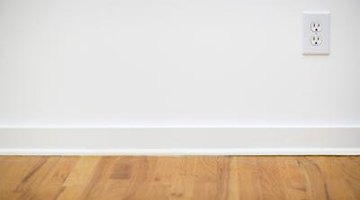Why Is My New Wood Floor Curling on the Edges?
A new wood floor adds instant warmth, beauty and value to a home, unless that floor is damaged or warped. Curling edges on wood floors is referred to as cupping. This curling, or cupping, has a number of causes, although most are related to moisture in one way or another.
Cupping

Cupping is not an uncommon problem in new wood flooring. As the edges bend or curl, the center of the plank raises up, creating a curve in the floor. Not only is cupping unsightly, it makes walking on the floor uncomfortable. It can also cause permanent damage that is expensive to repair. In some cases, the entire floor must be removed and replaced.
Moisture
Too much moisture is the usual culprit in cupping or curling. Wood floors installed over cement without a proper barrier may absorb moisture from the cement. This will cause the wood to warp and bend, especially at the ends, which may curl. Floors installed in basements, over damp crawlspaces and any other place high in moisture are susceptible to moisture. Even with proper vapor barriers, moisture reduction may be necessary in such areas to prevent curling and other damage.
Dryness
Although not as common, a lack of moisture can also cause the end of floor planks to curl. Wood flooring expands and contracts as moisture levels rise and fall. The wood does not lose moisture evenly, however, which causes the bends and warps as part of the wood becomes dryer than the rest. This happens most often in winter when heaters dry the air and lower the relative humidity. Humidifiers can help keep moisture in the wood during winter months to prevent cupping or curling.
Installation
Improper installation can cause the edges of wood floor to curl. The planks must be allowed time in the new location to adjust to the temperature and humidity level so that they are not overly contracted or expanded when installed. If they expand too much after installation, the edges may cup or curl. In addition, a small amount of space is necessary for normal expansion and contraction. If the planks are installed too tightly, they may also curl.
References
Photo Credits
- Jupiterimages/Brand X Pictures/Getty Images
More Articles



